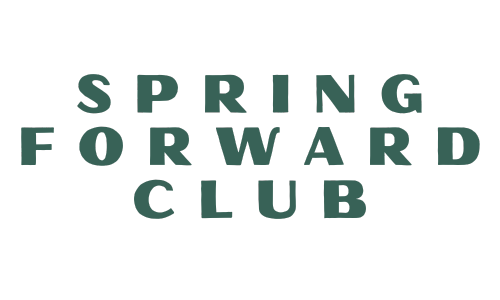Labels on food can be confusing and misleading, here is what they mean for meat and seafood and the best ones to get
Navigating food labels can be confusing, especially when it comes to meat and seafood. The terminology can be perplexing, often using marketing strategies that may not accurately reflect the product's true quality or production methods. Let's break down what each of these labels truly mean, allowing you to make informed choices and opt for the best options available.
The terms broken down
Grass-fed: Grass fed refers to animals that were fed grass for some part of their lives, but they may have also been fed other foods such as grains or soy at other times. This usually means they were primarily fed grass but were finished with some grain or soy.
Grass-finished: This term means that an animal was fed grass exclusively for the last few months of its life. This term is often used to describe animals that were initially raised on a conventional grain-based diet but were switched to a grass-based diet in the final stages of their lives to improve the quality of their meat.
100% grass-fed: This term indicates that the animal was fed only grass or hay for its entire life, without any grain or soy. 100% grass-fed animals are often considered to be the healthiest and most sustainable source of animal products, as they are raised in a way that mimics their natural diet.
Free-range: This term means they have outdoor access, but specifics (duration, size of area) vary based on regulations and farm practices. However, the label doesn't ensure a consistent standard of care or ample outdoor time; conditions differ between farms.
Pasture-raised: This term means animals have ample outdoor access to roam, graze, and forage. Unlike "free-range," it emphasizes natural behaviors and usually implies that the animals were raised primarily on pasture and had access to shelter and water.. Standards can vary, so look for certifications or inquire about specific practices for assurance.
Cage-free: This term indicates that the birds were not kept in cages, but it does not necessarily mean that they had access to the outdoors or were raised in a healthy or sustainable way.
Certified Humane: indicates that animal products meet high animal welfare standards set by the Certified Humane organization, ensuring better treatment throughout their life cycle.
Regenerative Farming: aims to restore and improve the ecosystem and soil health, going beyond sustainability by enhancing biodiversity and soil quality through innovative agricultural practices.
Wild-caught: This term is used for fish and seafood and indicates that the animals were caught in the wild, rather than raised in a farm or aquaculture setting. They typically feed on small fish such as herring, smelt, and anchovies, as well as on shrimp, squid, and krill.
Farm-raised: Refers to fish or seafood that has been raised in a controlled environment, such as a fish farm, rather than caught in the wild. These fish are typically raised in tanks, ponds, or other enclosures. They are usually fed fish pellets that are made up of a variety of protein supplements (other animal meat, additives, fish meal, plants, etc).
Ocean-raised: means fish were raised in natural water environments like oceans or seas, promoting a more natural habitat. Check for certifications for a full understanding of their conditions.
Hormone-free: This term indicates that the animals were not given growth hormones to promote faster growth or higher milk production.
Antibiotic-free: This term indicates that the animals were not given antibiotics to prevent or treat disease. This can help reduce the risk of antibiotic-resistant bacteria in animal products and in the environment.
Organic: This term indicates that the animal products were produced without the use of synthetic pesticides, fertilizers, antibiotics, or growth hormones. However, it is important to note that organic does not necessarily mean that the animals were raised in a healthy or sustainable way.
BPA-free: This term indicates that the packaging for the product is free of bisphenol A (BPA), a chemical commonly used in plastics that has been linked to health concerns. BPA-free packaging is generally considered safer for food and beverage storage.
Previously frozen: This term indicates that the product was frozen at some point before it was sold then thawed. This usually impacts freshness.
Non-GMO: This term indicates that the animal feed used to raise the animals did not contain any genetically modified organisms (GMOs).
Nitrate-free: means the food product has no added nitrites or nitrates, common in cured and processed meats. Consumers opt for these to reduce potential health risks associated with these additives.
Here's a breakdown of the best options when shopping for each item:
Canned Foods: look for BPA Free, Organic, and no filler ingredients.
Chicken: Look for organic and pasture raised chicken. Organic chicken is raised without antibiotics or synthetic pesticides, and is fed organic feed that does not contain genetically modified organisms (GMOs). Pastured chicken is allowed to roam and forage outdoors, which can result in a more nutrient-dense and flavorful meat.
Beef: Look for 100% Grass fed and Organic. High-quality beef should have a bright, cherry-red color and a firm texture.
Deli Meat: Check that it is Nitrate-free. Look for deli meat that is labeled as organic or natural. This means that the meat is free from synthetic pesticides and fertilizers, and has not been treated with antibiotics or growth hormones. Read labels and make sure no added preservatives. Tip, tell the deli meat counter you are allergic to nitrates.
Pork: Organic, No Antibiotics, Humanely Raised, and Minimal processing. Pork is tough because in commercial pig farming, their diet typically consists of a mix of grains, corn, soybeans, barley, and seed oils. Look for pork that is firm and has a pink or reddish color. When purchasing pork, choose leaner cuts, such as pork loin or tenderloin, which are lower in fat. Trimming any visible fat from the pork before cooking can also help reduce the overall fat content, pork fat contains a high proportion of saturated fat.
Eggs: Pasture-raised and organic
Salmon: Look for Wild-caught or Ocean-Raised (typically from farmers market). Wild salmon typically has a deep, vibrant color, ranging from bright red to orange. The color of the salmon is due to the pigments found in their natural diet of small marine organisms.
Shrimp: Wild caught. Preservative and chemical-free. In most cases, you're better off buying frozen shrimp, even when "fresh" shrimp are available. Check your label and make sure that it lists only "Shrimp" before purchasing; they tend to have additives.
Turkey: Look for ground turkey as organic and pasture-raised. This can ensure that the turkeys were raised without the use of antibiotics or added hormones. Fat content is preference. Check the ingredient list. Avoid ground turkey that contains added fillers, preservatives, or other artificial ingredients.
Note on Seafood
Organic certification for seafood is not currently regulated in the United States. While the USDA has established organic standards for certain agricultural products, including meat, dairy, and produce, they do not have specific regulations in place for organic seafood.
However, some third-party organizations do offer organic certification for seafood, and these certifications may follow different standards and guidelines depending on the organization. For example, the Naturland Organic Aquaculture Standard is a private certification that establishes organic standards for farmed fish and seafood, and it is recognized in several countries.
If a farm-raised fish or seafood product has been raised using sustainable and responsible practices, it may carry a label or certification from a reputable organization that indicates this. Here are some examples of labels to look for:
- Best Aquaculture Practices (BAP) Certification: This certification is given to fish and seafood products that have been raised in a facility that meets strict environmental and social standards. The BAP certification indicates that the facility has been audited and approved by a third-party organization.
- Aquaculture Stewardship Council (ASC) Certification: The ASC certification is given to fish and seafood products that have been raised in a responsible and sustainable manner. The certification covers environmental, social, and economic aspects of fish farming, and indicates that the facility has been audited and approved by an independent third-party organization.
- Seafood Watch: Seafood Watch is a program by the Monterey Bay Aquarium that provides recommendations on sustainable seafood choices. The program evaluates fish and seafood based on their impact on the environment and provides recommendations for consumers and businesses.
Where I shop for meat & seafood:
- Sprouts
- Crowd Cow
- Farmers Market
- Buy direct from farmers
Brands at the grocery store we love:
-
Force of Nature
-
Sprouts brand
-
Del Pacifico
-
Vital Farms
-
Alexandre
-
Pasture bird
-
Raw Farm
-
True Story
It is important to understand these terms given that in the world of meat and seafood products, several marketing terms are used without strict regulatory definitions. Phrases like "all-natural," "farm-fresh," "wholesome," and "pure" are often added to create a positive image for the product. However, these terms are not standardized or regulated, allowing manufacturers to interpret and use them as they see fit. This lack of clear guidelines can result in misleading claims, where a product labeled as "natural" may still contain additives or undergo significant processing.
To make informed choices make sure you read ingredient lists, look for credible certifications, and consider the overall reputation and transparency of the brand. Awareness is key to deciphering the true quality and characteristics of the meat and seafood products we consume.



1 comment
Thank you for making all of this information so clear and easy to understand!